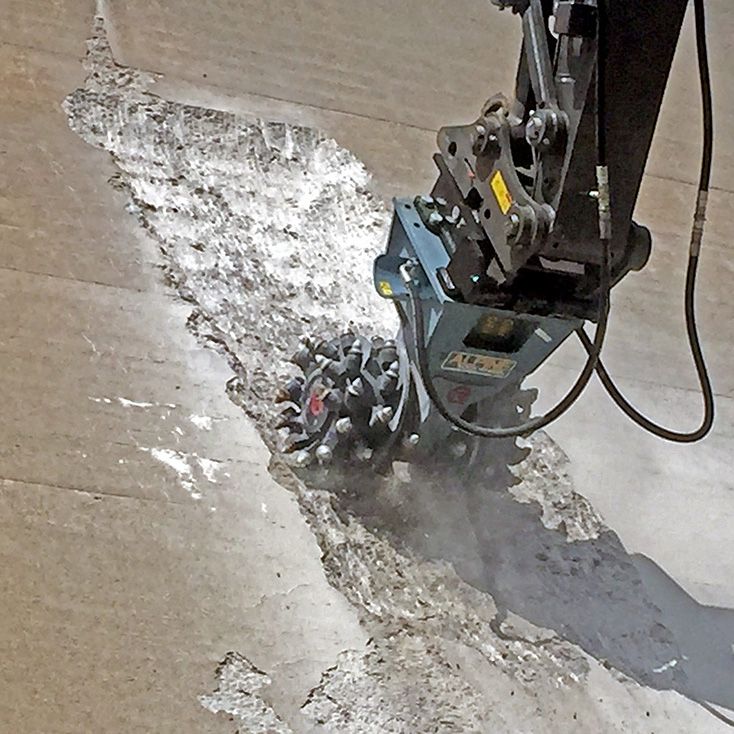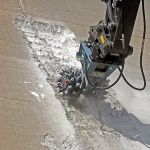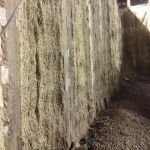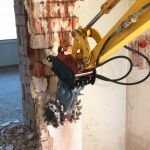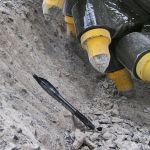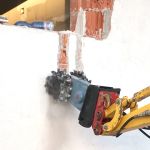Scaling
Minimize overbreak and vibration
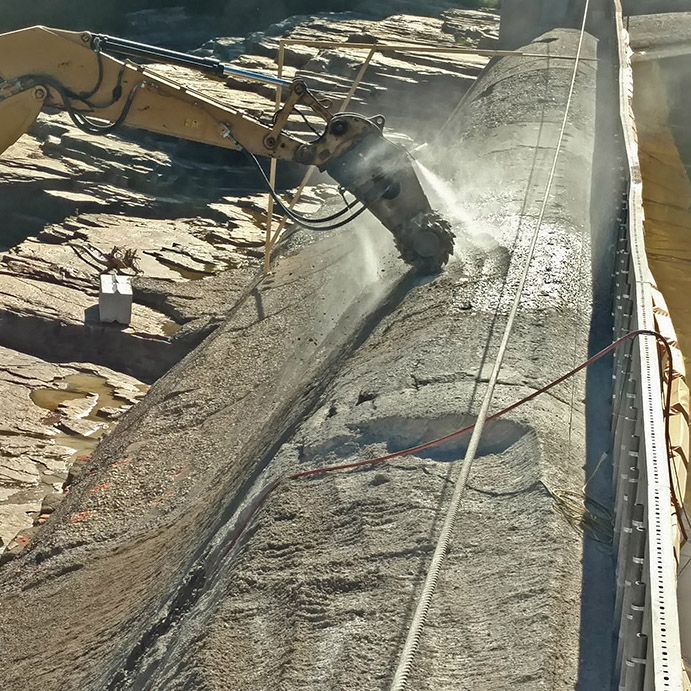
Concrete Scaling Solutions with Rockwheels
Concrete scaling is a common problem that affects the surface quality and durability of concrete. When you're dealing with flaking, chipping, or surface deterioration, Rockwheels provide a precise way to remove damaged layers without harming the solid concrete underneath.
They’re a smart solution for getting the job done quickly and cleanly, whether you’re working on bridge structures or concrete floors.
What Is Concrete Scaling?
Concrete scaling refers to the flaking or peeling of the concrete surface layer, often caused by repeated freeze-thaw cycles, deicing salts, or poor curing practices.
It weakens the surface mortar, exposes aggregate, and can destroy concrete surfaces over time. Even air-entrained concrete is at risk if the mix is off or if proper curing isn’t applied.
How Rockwheels Address Scaled Concrete Surfaces
Rockwheels from Rockzone Americas are engineered to remove damaged surface material with precision and control. Using advanced hydraulic motors and low-vibration cutting technology, these drum cutters grind away scaled concrete without harming the sound concrete beneath.
They’re ideal for addressing concrete scaling on concrete slabs exposed to freezing and thawing, deicing salts, or harsh environmental conditions. Rockwheels target only the deteriorated surface layer, leaving behind a clean, textured surface ready for further treatment.
Rockwheels can be used for rehabilitation of sensitive concrete structures such as foundations and bridge abutments and for excavation near lock gates.
The impact angle between the tips of the cutter bits (picks) and the concrete surface does not exceed 45 degrees. The smooth, low-noise, vibration-free machining action of the bits neither destroys nor causes micro-cracks in the underlying sound concrete.
In Addition to concrete scaling, many mining operations utilize Rockwheel for scaling loose debris after drill and blast operations, such as in limestone mines. The attachment can quickly, safely and effectively knock down boulders and chunks that fail to release during blasting.
Repairing Scaled Concrete Surfaces: Step-by-Step
Repairing concrete scaling starts with removing the damaged surface layer without affecting the sound concrete below. Rockwheels make this step simple and controlled, especially on concrete slabs with light scaling, surface flaking, or weak surface skin caused by environmental factors or poor curing.
Here’s how Rockwheels supports the repair process:
- Remove weak or unsound material caused by freezing and thawing, deicing salts, or high water-cement ratio
- Expose a clean, textured surface ideal for applying patching material or other repair materials
- Eliminate surface wet areas and rough surface patches that can trap moisture and lead to rebar corrosion
- Prepare the surface for proper curing and the use of a liquid membrane curing compound to prevent future scaling
- Create uniform conditions for applying protective coatings and promoting adequate moisture retention
This method leaves behind a repaired surface that’s better protected from further scaling, even in harsh winter environments.
With proper finishing techniques, a high-quality concrete mix, and adequate air entrainment, Rockwheels help restore structural integrity and prevent future damage.
Why Scaling Happens (and How to Prevent It)
Preventing concrete scaling involves recognizing the conditions that cause surface deterioration in the first place. Most issues start with how the concrete is mixed, placed, and cured. Even air-entrained concrete can fail if certain factors are ignored.
Common causes of scaled concrete surfaces include:
- A high water-cement ratio that weakens the surface layer
- Insufficient curing or skipping proper curing steps that leads to early surface drying
- Too little entrained air in air-entrained or non-air entrained concrete
- Use of sodium chloride deicing salts, especially during repeated freeze-thaw cycles
- Improperly constructed joints that allow moisture to enter and expand
- Poor finishing that disturbs the surface mortar or causes a low-strength surface layer
Even freshly mixed concrete can show early signs of damage if the concrete temperature drops too quickly or if adequate moisture is not maintained. These issues compromise structural integrity, leading to problems like surface flaking, cement paste breakdown, or concrete peels that eventually turn into scaled surfaces.
Preventing concrete scaling involves using a high-quality concrete mix, following American Concrete Institute guidelines, and applying proper finishing techniques. Attention to adequate air entrainment, adequate curing, and maintaining moisture through protective methods like protective coatings are also important steps.
When conditions aren’t right, future scaling is almost guaranteed. Addressing these causes early helps protect concrete, even in harsh winter environments or areas prone to severe chemical attacks.
Best Use Cases for Rockwheels in Concrete Scaling
Rockwheels are especially useful on projects where precise removal of the damaged concrete surface is required without affecting nearby structures. Their low-vibration cutting action makes them a strong choice for work in sensitive or confined areas.
Use Rockwheels confidently in situations like:
- Concrete floor repairs where moderate scaling exposes the surface layer
- Concrete slabs in cold climates that need clean removal of scaling from freezing and thawing
- Scaled concrete near foundations, lock gates, or bridge abutments
- Sites where surface preparation is needed before applying protective coatings
- Environments affected by severe chemical attack or freeze-thaw cycles
These attachments are built to handle challenging surface conditions while helping crews repair scaled surfaces and protect concrete without introducing unnecessary vibration or structural risk.
Protecting Your Concrete: Final Thoughts
Protecting concrete starts with removing damage the right way. Rockwheels give you the control to remove scaled concrete without harming the hardened concrete underneath.
Repairing concrete scaling isn’t just about fixing the surface—it’s about preventing future scaling. That includes proper surface preparation, using a high-quality concrete mix, and following best practices for air entrainment and curing, as outlined by the American Concrete Institute.
With the right prep and tools, repaired surfaces can withstand freeze-thaw cycles, maintain structural integrity, and resist surface damage over time.

